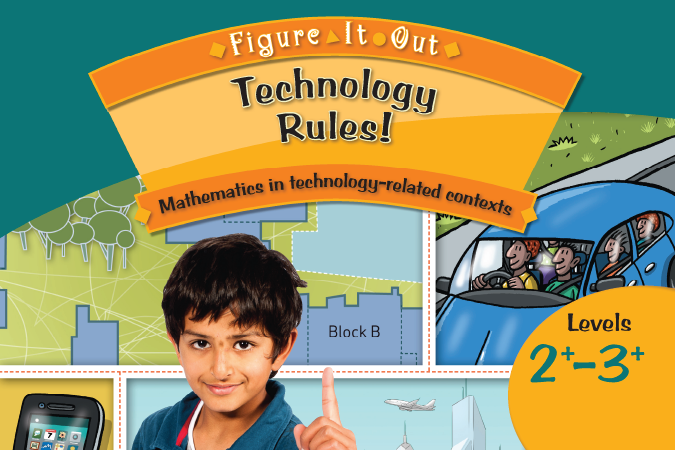Right way up!
This is a level 3 activity from the Figure It Out series. A PDF of the student activity is included.

About this resource
Figure It Out is a series of 80 books published between 1999 and 2009 to support teaching and learning in New Zealand classrooms.
This resource provides the teachers’ notes and answers for one activity from the Figure It Out series. A printable PDF of the student activity can be downloaded from the materials that come with this resource.
Right way up!
Achievement objectives
GM3-4: Represent objects with drawings and models.
Description of mathematics
Deductive reasoning involves using a logical and systematic approach to solve problems. In this activity, students need to find a simple way to write down the result of each function. This should enable them to identify whether the functions they have used are effective in achieving the correct orientation or have resulted in a loop that simply returns the cups to a previous iteration.
Required materials
- Figure It Out, Technology Rules!, Levels 2+–3+, "Right way up!", page 18
See Materials that come with this resource to download:
- Right way up activity (.pdf)
Activity
The students may find it helpful to use materials in their investigation, for example, cups or double-sided counters.
Recording trials is an important part of problem solving. In this exercise, a written or pictorial record will help the students discover if their instructions are effective in finding the correct orientation or creating a loop that leads to an earlier iteration. Ask the students to decide how to represent the orientation of the cups so that they can keep a running record.
Discuss with the students the two types of commands available: changing orientation by turning cups over (A) and swapping positions (B, C, and D). Extend the activity by asking the students to investigate which sequences are needed to swap cup positions; for example, swapping the cups in:
- 3rd and 4th place (answer: D→C→D)
- 1st and 2nd place (answer: C→B→C)
- 1st and 3rd place (answer: D→C→B→D→C→D→C)
- 2nd and 5th place (answer: it’s impossible).
Ask:
- What patterns can you see?
- Which cup never changes position?
Discuss with the students whether the results of this investigation would be useful when reorienting another arrangement of cups, for example,

Ask:
- Why or why not?
Challenge the students to generalise their findings by asking them what advice they can give to Uncle Arun so that he isn’t limited to trial and improvement. For example:
- Cup 5 always stays put.
- To invert a cup in positions 2, 3, and 4, you need to move it to position 1.
Invite the students to add a fifth command, for example, E: Turn the third cup over. The students can explore which new command is the most useful. This type of thinking is similar to that involved in designing computer software. Encourage the students to demonstrate the effectiveness of their new command.
Recording information in systematic, concise, and coherent ways develops the key competency "using language, symbols, and texts".
Technology-related student activities
- Examine a product and identify its systems. A bike, for example, could have steering, propulsion, warning, and protective systems.
Sometimes, the systems may not be easily identified or understood, for example, the black box. You could ask your students to identify products that have black box systems (for example, computers and cameras). - Examine Rube Goldberg or Heath Robinson drawings of humorous systems. Have students design their own.
- Examine everyday products or designs and suggest modifications to improve safety. For example, how could an electric kettle be made safer?
Exploring the technology-related context
Developing a technology can take a lot of time and effort. If a particular design has a number of systems within it, it can be difficult to ensure that each functions appropriately. For example, a car has steering, braking, and electrical systems, and it may take a lot of trialling to produce a fully functioning prototype. Car designers must also comply with safety requirements and include systems to protect drivers and passengers in the event of crashes or system failures.
1.
a. The moves so far are:

b. A→B→A.
A again, to reverse it back to

then B to get it to

then A to get

c. Answers will vary. For example, you can do it in 4 steps if you use D→C→B→A. (Komal and Uncle Arun used 7 steps on their first attempt.)
2.
Answers will vary. The fastest way (3 steps) is:

The quality of the images on this page may vary depending on the device you are using.


